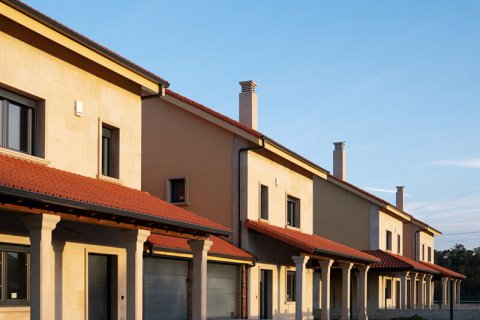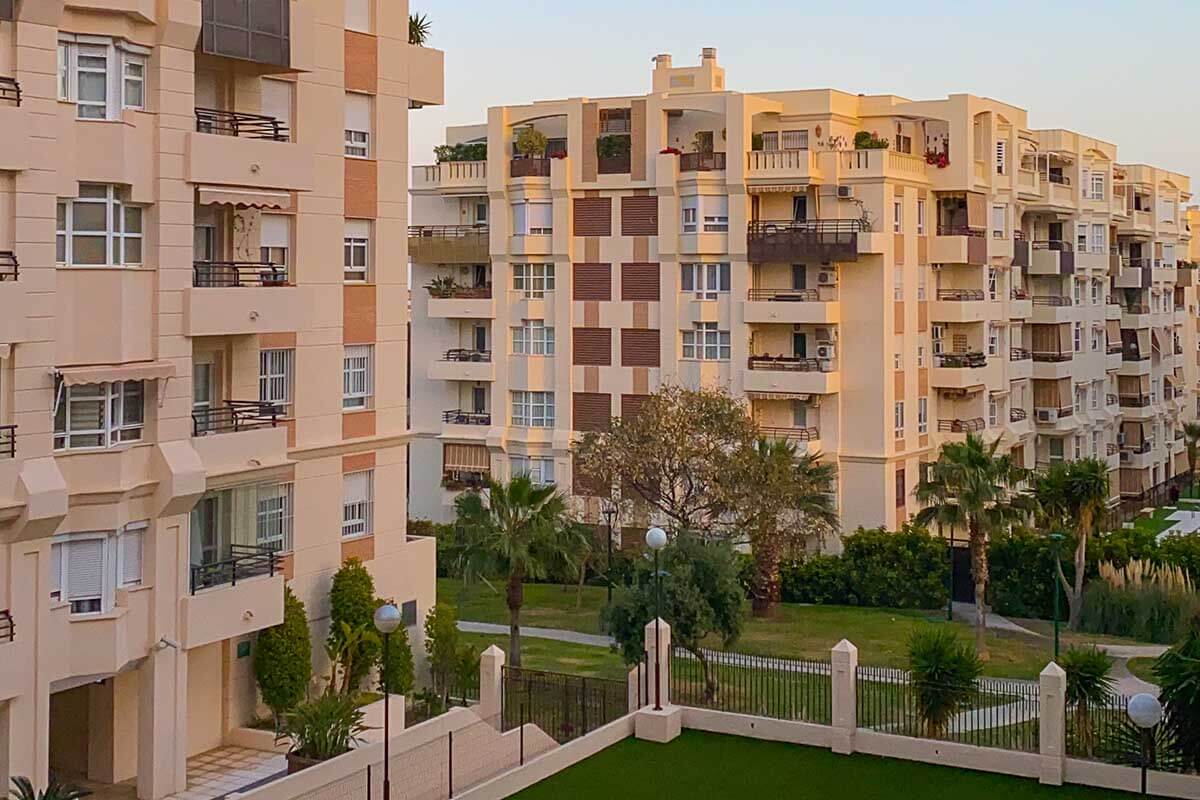
Co-living is a residential community living model that is becoming popular in the Spanish housing market.
This is a logical extension of coworking, a model that takes a step forward and unites people in working or living together in a shared apartment.
Content:
- Co-living — what is it about?
- What does this have to do with condominiums?
- Co-living and condominiums in Spain
- Conclusion — is it worth purchasing and investing in condominiums
Co-living — what is it about?
We will draw a comparison to help you understand what co-living is —real estate in this field is a cross between living together in an apartment and a student dormitory.
Simply put, this type of real estate includes private rooms, apartments, and other personal places. However, there are also a sufficient number of public spaces serviced and used by all residents.
In relatively cheap properties, these spaces can be parks, canteens, and kitchens. Luxury real estate includes large swimming pools, parks, playgrounds, barbecue areas, and other recreational areas.
The main motivator of living in these communities is not so much the desire to economically purchase and maintain a property but to live in a group of people with similar interests and views regarding recreation.
This is becoming more common for many people particularly since the coronavirus pandemic hit as it has forced many people to choose remote work and isolate themselves from society.
However, this kind of isolation is not beneficial for the mental and emotional health of people. As a result, experimental ways of life are being introduced into the real estate market to compensate for the lack of social interaction between people.
Moreover, this type of demand in the market encourages developers to increasingly try and meet it. This, in turn, opens up new opportunities for real estate investors to earn money.

Who needs it?
The main demand for co-living comes from the millennial generation and Generation Z. That is, people aged 20-35 years.
Young people are interested in purchasing their first home and co-ownership of real estate is a good choice.
Moreover, the older generation who grew up in the era of the rapid development of the Internet and “network loneliness” are interested in it. This is because they’re looking for options to settle down, be in touch with real people, and access constant communication.
The results of the pandemic are only reinforcing these types of needs.
The popularity of co-living comes from the USA. It originated in the early 2010s and gradually spread to the UK, Germany, Japan, and Indonesia.
A similar trend came to Spain via Barcelona and Madrid. This is also where most of these properties available for investment are located. However, it is also worth visiting cities such as Valencia, San Sebastian, Seville, and Malaga.
The array of additional spaces in housing as mentioned is really what attracts people. In addition to this, co-living, owning a property, and taking care of it reduces the cost of real estate and allows you to add gyms, libraries, swimming pools, sports grounds, park spaces, and much more.
From the investor's point of view
The number of properties in recent years has been small but is increasing significantly every year. Until 2021, there weren’t more than 1000 housing units. However, by the end of this year, this number was 5 times more.
This sector is at an early stage of development and we strongly advise you to start keeping an eye on it now. This way, you can invest in the most attractive and profitable properties.
According to the current analysis, these assets can offer significantly higher returns than other types of residential real estate - at a level of 5-5.5%. Traditional residential real estate in Spain usually offers 3-3.5%.
Furthermore, supply and demand in the market should grow in the coming years as major developers in Spain have already announced plans to actively construct this type of housing. The list includes cities such as Inedit, StarCity, Vanguard, Habyt, and many others.
What does this have to do with condominiums?
This article has not yet touched on what kind of real estate co-living concerns.
As you can identify from the title of the section, these are condominiums.
First of all, a condominium is not a specific type of housing or way of life. A condominium is a form of ownership of real estate, whatever that may be.
Condominium ownership is a mixture of shared-equity construction and homeowners' association.
Usually, a condominium is a large residential complex with separate residential properties (penthouses, apartments, studios) and public spaces.
It is convenient to compare this with apartments.
In a residential complex, the apartments and land usually belong to a certain private person. This is usually a developer.
The developer builds a property and either sells apartments to new owners or rents them out. At the same time, the developer also owns the building and land.
A condominium is a form of full ownership of a property by all residents. Private living spaces are registered for specific persons while the rest of the residential and non-residential areas of the accommodation as well as the land are collectively owned.
This shared space is managed by the Condominium Association. This association is a collective body consisting of housing tenants that also collect money from tenants to maintain the property.
Additionally, this authority makes decisions regarding the maintenance and development of the real estate by consulting with other residents. Furthermore, the members of the body are elected and removed from office.
A condominium can be built during shared-equity construction when the finished building is transferred to tenant-equity holders. A condominium can also be purchased by all tenants from the property of a private person. For example, a developer or company that bought the property directly from the developer before that.
Condominiums can consist of both multi-story residential buildings and a large number of other properties like townhouses.
What’s more, housing units that are collectively owned can be transferred to one of the tenants for an exclusive ownership opportunity if no one else is interested in using it – like a parking bay.
This is done to remove the maintenance cost from the resident who does not use it.
All the rights and obligations of the condominium management and each tenant are set out in a special document called a Declaration of agreements, conditions, and restrictions.
If we consider a condominium from the point of view of an investor, the opportunity to earn money is as follows:
- Invest in the project at the construction stage since you as the buyer will receive a percentage of the profit when the condominium is fully operational;
- Purchase property from a developer after construction and find buyers who want to start a condominium;
- Own a part of the property, separate rooms or apartments and then sell them to tenants who are ready to form a condominium.

Co-living and condominiums in Spain
Why is this type of property becoming popular in Spain?
As mentioned, some reasons are generational changes and the consequences of the pandemic. However, this was only the trigger that started the process. The main reason that this is becoming increasingly popular in Spain lies in the mentality and way of life of Spaniards.
In Spain, co-living or co-residence with a large number of people is typical.
This can be seen in the infrastructure as almost every city in Spain consists of a huge cluster of interconnected buildings and districts.
What’s more, in Spain, you can’t purchase a studio, apartment, or house and settle there. When purchasing a house, you are purchasing a place in a certain community of residents. You need to consider how well you fit into this community and how easily you can integrate into it depending on how long you will live in your new accommodation.
Interestingly, the community takes care of the residential areas. Together, they invest in the development and maintenance of the property, do gardening, clean the pool and roof terraces, as well as, clean and repair living areas.
Spaniards have a team spirit. This applies to life, work, and recreation. So even though the concept of co-living originated on the other side of the ocean, it has grown and integrated pretty well in this country.
Construction and sales models
Currently, there are 2 general ways of organizing a condominium and residential space. Both of these are popular in Spain right now.
The first option involves combining a group of people. For example, this could include a working team, a contract for investing in a construction project and an agreement with a third-party developer to build the accommodation.
Usually, a necessary part of this process is a rather lengthy search and selection of people who are also interested in condominiums but are not part of the original team.
The second option implies a development or investment company agrees with the developer about the construction. This is followed by a broad marketing campaign that promotes the new development on the market as a potential condominium in order to create a base of buyers who will wait for its completion. Many of these buyers can become off-plan investors to receive benefits.
The third option is to purchase several neighboring properties for various purposes and convert them into 1 complex with both living areas and public spaces. These complexes are sold on the local market with a margin of 20-50% of the initial total purchase price.

Conclusion — is it worth purchasing and investing in condominiums?
For those looking for a good way to move to Spain, condominiums are a great starting point. Owning this type of housing is cheap. Plus, a strong emphasis on socialization will allow you to quickly adapt to Spanish society. This includes having access to an excellent platform to develop your language skills and understand the mentality and norms of Spanish society from native speakers.
If you’re not worried about money, moving to a permanent place of residence in another country is a great opportunity. What’s more, co-living offers a fairly democratic option to try and live your life in Spain.
From an investor's point of view, investment in any new trend is risky, especially without doing a clear background check on the established paradigms of development and growth. More to the point, when there are no established earning strategies, any action can lead to either incredible profits or high losses.
Nevertheless, co-living and condominiums still provide extremely good potential. Particularly as it’s a market without oversupply and is projected to grow exponentially in the next few years.
There is a huge unmet demand, due to the consequences of the current situation but also the mentality of the Spaniards.
At the moment, analysts say that profits from this sector are higher than more traditional types of accommodation.
What’s more, there are several strategies to enter the market that are quite flexible.
Co-living is a sector that may not be an ideal way into the market right now but with careful monitoring of the situation, you do so favorably. So be the first to profit from this sector - grab a slice of the pie now!
